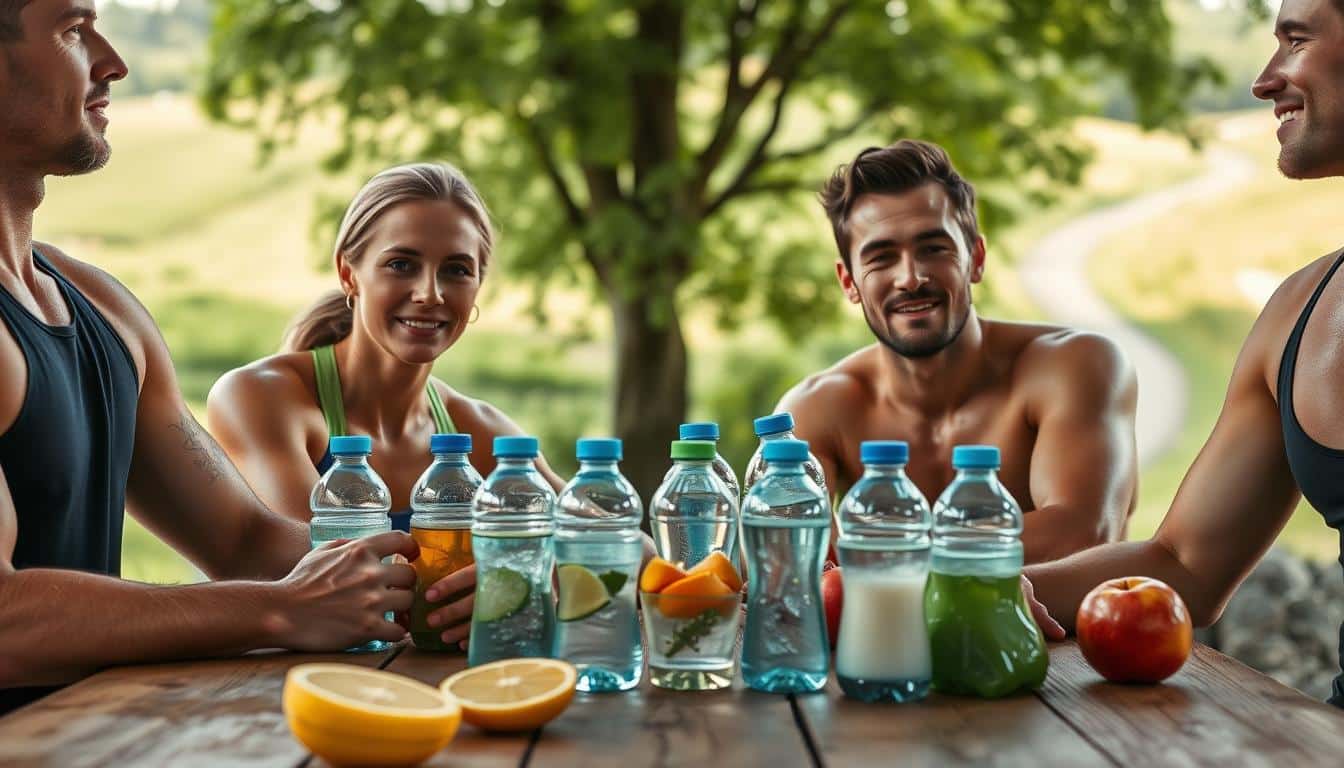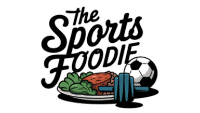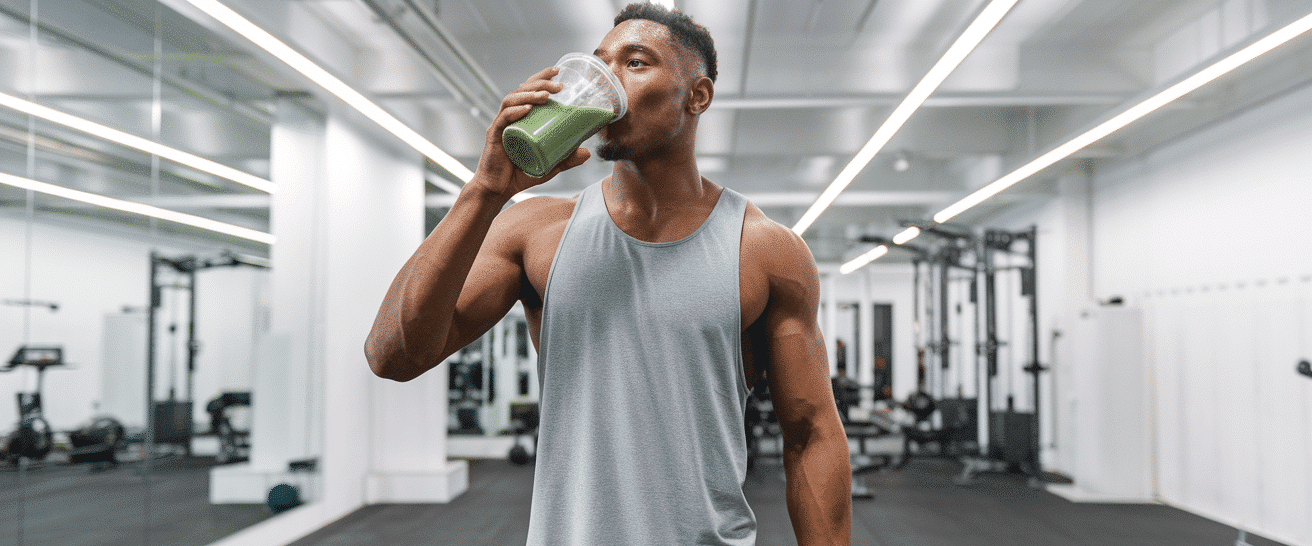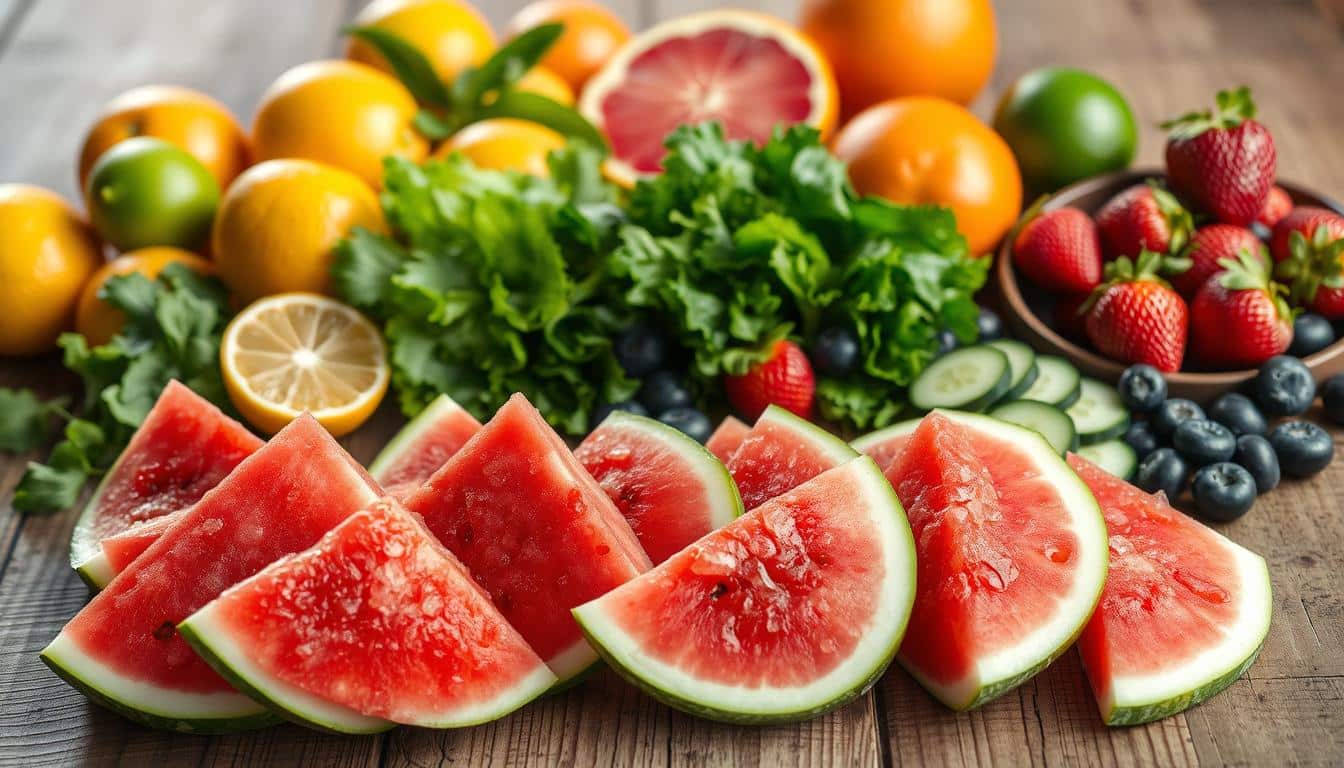Did you know a single hour of intense exercise can drain over 48 ounces of water from your body? That’s more than three standard water bottles lost through sweat alone. While chugging fluids gets most of the attention, what you eat plays a bigger role than you might think.
Your muscles and organs rely on water for every movement and function. It makes up 60% of your body weight and helps regulate temperature during workouts. But here’s the kicker: nearly 20% of your daily fluid needs come straight from meals and snacks.
Active individuals face unique challenges. Dehydration can zap energy, slow reaction times, and even cloud mental focus mid-game. The right meal choices act like a slow-release hydration system, providing moisture and nutrients simultaneously.
We’ve curated a list of 12 powerhouse ingredients that do double duty. These picks deliver essential vitamins and minerals while keeping fluid levels steady. Some might surprise you—like crunchy veggies you already love or tropical fruits packed with electrolytes.
Pairing smart eating with your water bottle creates a winning strategy. You’ll maintain peak performance longer and recover faster after tough sessions. Let’s dive into how these everyday superfoods can upgrade your training routine.
Introduction and Overview
Think of your body as a high-performance engine—it needs more than just fuel to run smoothly. While water bottles grab the spotlight, what’s on your plate quietly works behind the scenes to keep you energized. This guide reveals how everyday ingredients become your secret weapon for maintaining fluid balance during workouts.

Purpose of the Article
We’re here to show you why gulping water alone won’t cut it during intense training. You’ll learn how specific ingredients lock in moisture while delivering nutrients your muscles crave. Our goal? Help you build meals that act like 24/7 hydration stations for your body.
Overview of Hydration Benefits
Water does heavy lifting you might not notice. It cools you through sweat, shuttles energy to cells, and even helps your brain track that flying soccer ball. Skimp on fluids, and you’ll feel it—slow reaction times, fuzzy thinking, and restless nights.
Here’s the game-changer: Smart food choices release moisture slowly. They also pack electrolytes that plain water lacks. This combo keeps your energy steady during sprints and helps you bounce back faster after drills.
The Importance of Hydration for Athletes
What separates good athletes from great ones? Often, it’s what’s flowing through their veins—literally. Proper fluid balance acts like invisible armor during training, protecting your performance and health when stakes run high.

Benefits of Adequate Hydration
Your muscles work smarter, not harder, when you’re properly fueled. Water maintains blood volume so your heart pumps efficiently—critical during sprints or climbs. Joints stay slick, and nutrients reach cells faster, speeding recovery between sets.
Electrolytes in fluids help nerves fire crisply. This means quicker reaction times during drills and steadier energy through overtime matches. Well-tuned nutrition habits paired with hydration also prevent overheating, especially in sweltering conditions.
Common Signs of Dehydration
Your body sends flares when reserves dip: sticky mouth, headache fog, or skin losing its glow. Fatigue hits harder than usual, and bathroom breaks become less frequent. Ignore these warnings, and coordination slips—like misjudging a catch or botching a serve.
Severe fluid loss strains your system. Heart rates spike as blood thickens, making every movement feel like uphill battles. Spotting early symptoms lets you course-correct before workouts derail.
How Water and Food Contribute to Hydration
Your water bottle isn’t the only tool in your hydration toolkit. What you eat plays a stealth role in keeping fluids balanced—especially when training demands peak performance.
Fueling Fluid Reserves
Every bite adds to your hydration. Raw fruits and vegetables work like edible sponges—they’re 80-95% water by weight. Pair them with lean proteins, and you create meals that drip-feed moisture for hours.
Here’s why this matters: The fiber in these ingredients slows water absorption. You avoid sudden energy crashes while maintaining steady fluid levels. Plus, natural sugars and electrolytes help cells hold onto moisture longer.
| Food | Water Content | Key Nutrients | Best Time to Eat |
|---|---|---|---|
| Cucumber | 96% | Vitamin K, Potassium | Pre-workout snack |
| Watermelon | 92% | Lycopene, Magnesium | Post-training recovery |
| Bell Peppers | 92% | Vitamin C, Folate | Meal sides |
Strategic timing boosts results. Munch on crisp veggies before practice for gradual hydration. After drills, choose fruits with electrolytes to replenish what sweat stole. This approach turns snacks into performance-enhancing tools.
Remember: While drinks quench immediate thirst, meals build lasting reserves. Combine both methods, and you’ll power through workouts without hitting empty.
Fresh Fruits That Hydrate Your Body
What if your post-workout snack could do more than just satisfy hunger? Nature packs some fruits with enough moisture to rival your water bottle. These juicy options pull double duty—quenching thirst while fueling muscles with essential nutrients.
Top Hydration Champions
Watermelon steals the show with 92% water content. Its red flesh contains lycopene, an antioxidant that protects cells during tough workouts. Bonus: The amino acid citrulline may boost blood flow to working muscles.
Strawberries match watermelon’s moisture levels. They deliver more vitamin C than oranges per serving—critical for repairing muscle tissue. Both fruits offer natural sugars that energize without energy crashes.
Powerhouse Nutrients
These options fight exercise stress on two fronts. Antioxidants combat cell damage from intense sessions. Electrolytes like potassium help maintain fluid balance when sweat pours.
Vitamin C in strawberries speeds recovery by reducing inflammation. Watermelon’s magnesium aids muscle function during sprints or lifts. Together, they form a tasty defense against dehydration and fatigue.
Slice them into pre-training yogurt bowls or blend into post-workout smoothies. Their portable nature makes hydration easy whether you’re courtside or hitting the trails.
Crisp Vegetables That Refresh and Hydrate
Crunchy snacks do more than satisfy hunger—they’re your body’s natural hydration stations. Vegetables with sky-high moisture levels keep you fueled during drills while delivering essential nutrients. Let’s explore the crispest options that belong in every athlete’s meal plan.
Vegetable Options With Maximum Moisture
Cucumbers lead the pack at 96.7% water—higher than any other solid food. Their mild flavor and satisfying crunch make them ideal for post-training salads or quick snacks. Pair slices with hummus for added protein that supports muscle recovery.
Iceberg lettuce (96% water) and celery (95%) work as low-calorie bases for wraps or sides. The fiber in celery helps your body retain fluids longer, while radishes offer 95% moisture plus vitamin C. These options prove hydration doesn’t require sugary drinks or complicated recipes.
- Bell peppers: 92% water with antioxidants that combat exercise stress
- Radishes: Hydrate efficiently at just 1 calorie per piece
- Spinach: 91% water plus iron for oxygen transport
Eat them raw to preserve water content, or blend into chilled soups for summer training days. Their natural electrolytes—like potassium and magnesium—help maintain fluid balance when temperatures rise. Smart snacking never tasted so crisp.
Hydrating Foods for Athletes: Essential Picks
Your training gains might depend as much on your grocery list as your workout plan. Three moisture-rich options stand out for their ability to fuel performance while replenishing what sweat takes away. Let’s unpack why these picks belong in your meal rotation.
Top Picks for Performance
Oranges do more than boost immunity—their potassium content acts like a natural cramp fighter. One medium fruit delivers 10% of your daily needs, helping muscles contract smoothly during sprints or lifts. Slice them into pre-training snacks for steady energy.
Cantaloupe’s sweet flesh hides a powerful duo: potassium and magnesium. These minerals team up to shuttle energy to working muscles while flushing fatigue-causing lactic acid. Perfect for post-workout smoothie bowls or recovery snacks.
Tomatoes bring triple benefits. Their folate content supports heart health during endurance sessions, while potassium balances fluids lost through sweat. Add them to post-training salads or blend into gazpacho for a cooling boost.
Nutrient Highlights in Each Food
These ingredients work overtime to keep you game-ready. Potassium isn’t just about bananas—it’s in every bite of cantaloupe and tomato, maintaining fluid balance during drills. Magnesium in melons helps convert carbs into usable energy mid-workout.
Don’t overlook folate. Strenuous activity drains this B vitamin, but tomatoes replenish it efficiently. Pair these picks with protein sources to create meals that repair muscles while restoring hydration.
Time your intake strategically. Enjoy oranges 30 minutes before training, cantaloupe after cooling down, and tomatoes with post-workout meals. This approach turns everyday ingredients into performance allies that support every rep and mile.
Soups and Dairy: Additional Hydration Boosters
Your training nutrition might need a warm twist. While fruits and veggies grab attention, savory options pack serious moisture and recovery benefits. These choices work especially well when temperatures drop or your stomach craves something hearty.
Broth-Based Fluid Powerhouses
Black bean and butternut squash soups do triple duty. They’re a great source of water, with each bowl containing 85-90% fluid. The fiber in split pea varieties supports digestion, while plant compounds reduce post-workout inflammation.
Warm soups excel in cold weather training. Their steam opens nasal passages, and the heat comforts stiff muscles. Add spinach or zucchini to boost mineral content without altering flavors.
Dairy’s Hidden Hydration Perks
Plain yogurt contains up to 80% water—more than many sports drinks. Its nutrients include calcium for bone strength and potassium to prevent cramping. Probiotics aid nutrient absorption, making every bite count toward recovery.
| Food | Water Content | Key Benefits | Best Time |
|---|---|---|---|
| Black Bean Soup | 89% | Fiber + Iron | Post-Endurance Meals |
| Greek Yogurt | 80% | Protein + Probiotics | Morning or Post-Workout |
| Butternut Squash Soup | 87% | Vitamin A + Potassium | Evening Recovery |
Mix yogurt with watermelon cubes or cucumber slices for extra fluid intake. These combos deliver minerals lost through sweat while keeping meals interesting. Soups and dairy prove hydration doesn’t mean boring meals—just smarter ones.
Key Nutrients in Hydration Support
The right nutrients can turn every meal into a hydration strategy. While water moves through your system quickly, specific compounds help cells hold onto moisture longer. This dual approach keeps energy steady during sprints and recovery efficient after workouts.
Electrolytes and Vitamins
Magnesium works backstage to regulate fluid levels. It teams up with potassium to maintain muscle function when sweat pours. Leafy greens and nuts deliver this mineral naturally.
Vitamins like C and B-complex play crucial roles too. They help convert food into energy while protecting cells from exercise stress. Citrus fruits and whole grains offer these nutrients in forms your body absorbs quickly.
Electrolytes aren’t just for sports drinks. Sodium and potassium in everyday ingredients balance fluids across cell membranes. Pair them with water-rich produce for lasting results.
Smart nutrition choices create a ripple effect. You’ll notice better focus during drills and faster bounce-back between sessions. Combine these nutrients with regular hydration habits for peak performance.


